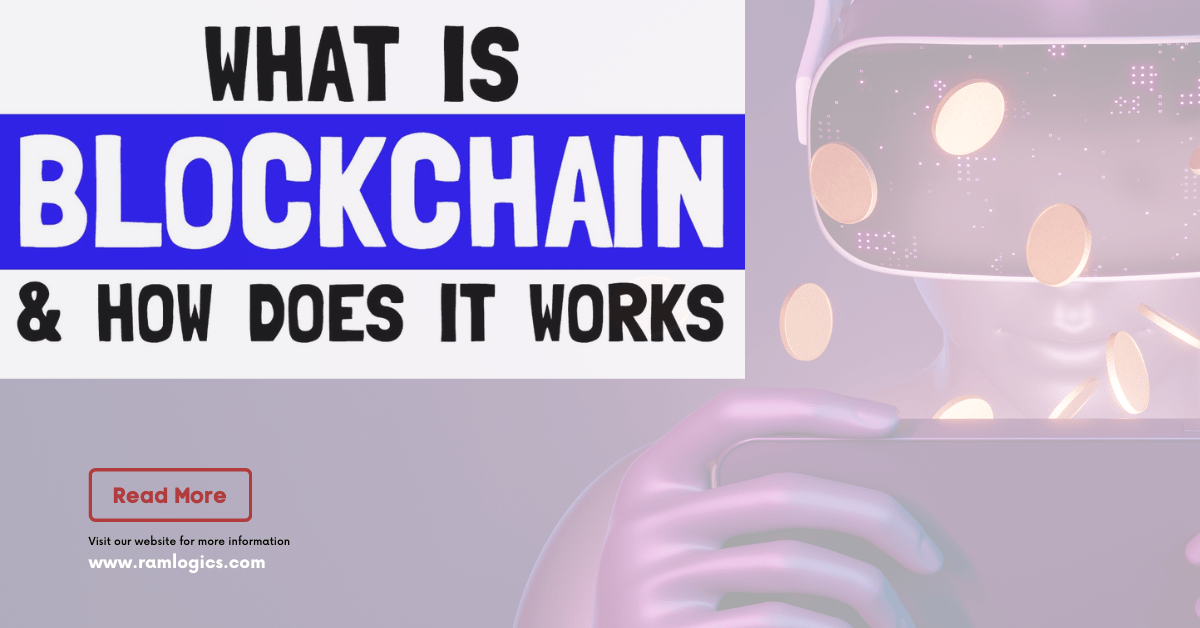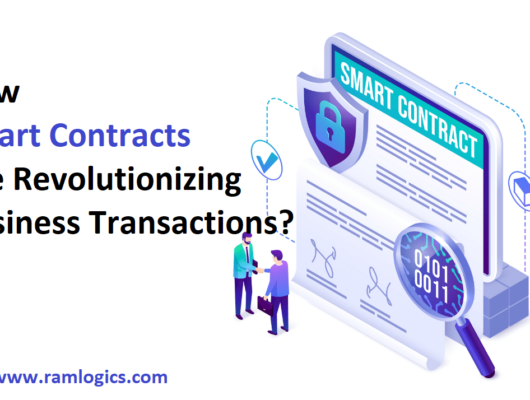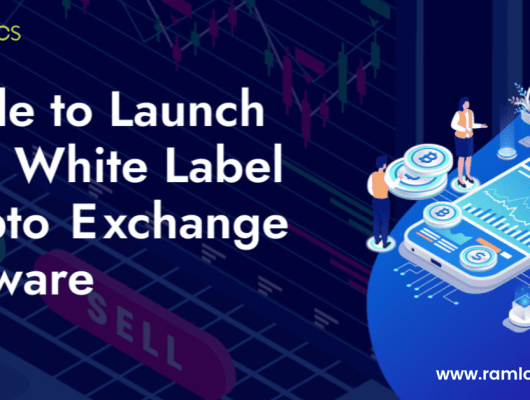What is Blockchain Technology? This article covers the information about the following Blockchain related queries:
- What is Blockchain Technology?
- What are the Unique Features of Blockchain Technology?
- What is the History of Blockchain Technology?
- What are the Main Components of Blockchain Technology?
- What are the Different Types of Blockchain Networks?
- How Blockchain Technology Works?
- Which Industries are Using Blockchain Technology?
- What are the Protocols or Platforms for Blockchain Applications Development?
- What are the Benefits of Blockchain Technology?
- What are the Limitations of Blockchain Technology?
What is Blockchain Technology?
The blockchain is basically an advanced database mechanism that facilitates the open exchange of information within a business network. In a blockchain-based database, the data is stored in blocks that are linked to each other chronologically and sequentially in a chain.
Launch Your Own Token, With a Trustable ICO Development Company
Contact Today!!
What are the Unique Features of Blockchain Technology?
1. In the blockchain database, nobody can change or delete the data without a consensus from the network.
2. You can use the blockchain database to create an immutable and perpetual ledger to track the valuable information related to your business.
3. The blockchain database mechanism guarantees the security of your data entries by preventing unauthorized data entries and ensuring consistency in the overall presentation of your business information. What is Blockchain Technology?
What is the History of Blockchain Technology?
1. In The Late 1970s – Ralph Merkle patented the concept of a Merkle/Hash Tree. The concept represented a structure of data stored in cryptographically linked blocks.
2. In The Late 1990s – Stuart Haber and W. Scott Stornetta used the Merkle/Hash Tree concept to create a system that prevented the spoofing of the document time stamp.
3. 2008 – The pseudonym, Satoshi Nakamoto used the blockchain mechanism to develop the first cryptocurrency – Bitcoin. In the Bitcoin Transaction System, the size of information blocks was limited to 1 MB.
4. 2015 – Vitalik Buterin and his team used the blockchain mechanism in the Asset Transfer-Transactions of his cryptocurrency – Ethereum. The use of the blockchain mechanism in the Asset Transfer Transaction of Ethereum led to the prospect of using Smart Contracts.
5. Today – Companies are using the blockchain mechanism to develop business applications for various industries.
What are the Main Components of Blockchain Technology?
Blockchain technology has the following 3 main components:
1. Decentralized (Distributed) Ledger: The Decentralised Ledger is the common database of a blockchain network that stores copies of the blocks of transaction records in the form of a common file the users of the network can edit as per the set rules and conditions. Once an entry is made in a blockchain database, nobody from the network can delete it.
2. Smart Contract: The Smart Contract is a program of the blockchain database that runs automatically as per the rules and conditions. The Asset Transfer-Transactions are recorded in the blockchain database only when they meet all the rules and conditions of its Smart Contract program. The companies can develop a customized Smart Contract program for their blockchain-based business applications.
3. Cryptographic Keys: Cryptographic Keys are the main components of a Blockchain Security System that use them to identify the authorized users of a blockchain network. The Blockchain Security System generates two types of Cryptographic Keys: The Private Cryptographic Key and the Public Cryptographic Key. To unlock the data block of a blockchain database, a Valid Combination of Public and Private Cryptographic Keys is mandatory. What is Blockchain Technology?
What are the different Types of Blockchain Networks?
Blockchain technology has the following 4 types of networks:
1. Public Blockchain Network: Anyone can join a Public Blockchain Network. All the users of a Public Blockchain Network have equal rights to read, edit and verify the data record. Example. Bitcoin, Ethereum, and Litecoin are Public Blockchain Networks.
2. Private (Managed) Blockchain Network: A single entity controls the Private (Managed) Blockchain Network. The sole authorized entity selects the members of its Private (Managed) Blockchain Network and gives them the rights to read, edit and verify its data blocks. Example. Ripple is a Private (Managed) Blockchain Network.
3. Hybrid Blockchain Network: The Hybrid Blockchain Network has both Private and Public Users. Private Users can access both private and public records. Public Users can access Private Records if they have Smart Contracts. Example. The Hybrid Blockchain Networks can provide Cryptocurrency to Public Users and Banking Currency to Private Users.
4. Consortium Blockchain Networks: The Consortium Blockchain Networks are managed by a group of like-minded organizations that benefits from the sharing responsibility of reading, editing, and verifying the information blocks of its blockchain database. Example. Global Shipping Business Network is a Consortium Blockchain Network of like-minded shipping operators. What is Blockchain Technology?
How Blockchain Technology Works?
Blockchain Technology works in the following 4 stages:
Stage 1 – Creation of Record
The user creates a block entry while mentioning the following information:
- The participants of the transaction.
- The narration of the transaction.
- The time of the transaction.
- The location of the transaction.
- The reason for the transaction.
- The number of assets transferred.
- The number of set rules and conditions met during the transaction.
Stage 2 – Verification of Transaction
The participants of the transaction must verify that the rules and conditions of the transaction are met.
Stage 3 – Reaching a Consensus
As the transaction record of a block is verified by other users of the blockchain network, a new block is created in the blockchain database with a cryptographic hash. This Cryptographic Hash is a chain linking the new blocks added to the blockchain database. If someone tries to change the transaction record of the block, the value of the cryptographic hash is changed and the data forgery is exposed immediately.
Stage 4 – Distribution of New Blocks to the Central Registry
As the users of a blockchain network verify the transaction record of the block, a copy of the latest block is sent to the central registry that distributes it to all users of the blockchain network.
Which Industries are Using Blockchain Technology for their Business Applications?
Today, the following industries are using blockchain technology to develop their business applications:
- Banks
- Stock Exchanges
- Retailers
- Insurance
- Real Estate
- Energy
- Media
- Entertainment
- Data Management
- Public Services
What are the Protocols or Platforms for Blockchain Application Development?
There are 4 major protocols or platforms for Blockchain Application Development:
1. HyperLedger Fabric: HyperLedger Fabric is an open-source platform that provides all the necessary tools and libraries for faster and quicker Blockchain Application Development. You can use the Identity and Access Control Feature of the HyperLedger Fabric to develop business applications for Trading, Finance, Supply Chain Tracking, etc.
2. Ethereum: Ethereum is a decentralized (distributed) open-source platform for Blockchain Application Development. You can use the Enterprise Version of the Ethereum Platform to develop Blockchain Applications for commercial purposes. What is Blockchain Technology?
3. Corda: The Corda is an open-source Blockchain Platform that you can use to Create Interoperable Blockchain Networks for fast and secure business transactions. The Smart Contract technology of the Corda Blockchain Platform best serves Financial Institutions.
4. Quorum: Quorum is an open-source blockchain platform derived from Ethereum. You can use the Quorum Platform to develop Private Blockchain Applications and Consortium Blockchain Applications. What is Blockchain Technology?
What are the Benefits of Blockchain Technology?
Blockchain Technology comes with the following benefits:
- Companies can use Blockchain Technology to make their operations fair and transparent.
- Companies can use Blockchain Technology to reduce the cost of business activities that require intermediaries.
- Blockchain Technology offers you the most secure database mechanism.
What are the Limitations of Blockchain Technology?
Blockchain Technology comes with the following limitations: What is Blockchain Technology?
- Blockchain technology has slower data-processing capabilities compared to Traditional Databases.
- There are only a few ready-made solutions for Blockchain Application Development.
- There are no legal regulations and standards for Blockchain Technology.
- For the successful implementation of Blockchain Technology, companies not only need to change their Internal Structure but also their Business Models. What is Blockchain Technology?
Get Quote – Connect on WhatsApp



